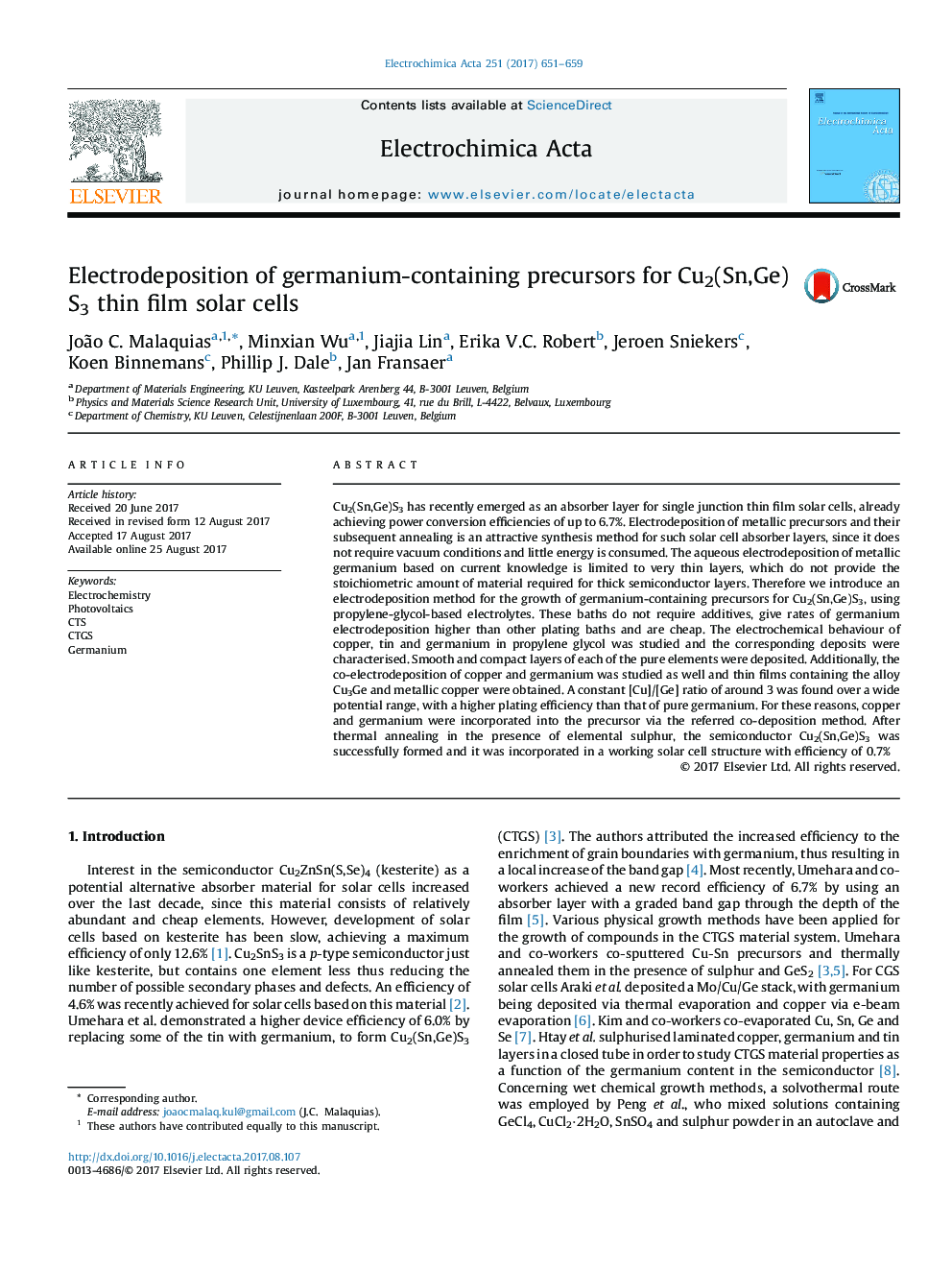| کد مقاله | کد نشریه | سال انتشار | مقاله انگلیسی | نسخه تمام متن |
|---|---|---|---|---|
| 6470004 | 1424106 | 2017 | 9 صفحه PDF | دانلود رایگان |

- Electrodeposition-based method for the fabrication of Cu2(Sn,Ge)S3 absorber layers.
- Electrodeposition of smooth and compact layers containing Cu, Sn and Ge was achieved.
- Direct electrodeposition of Ge and Cu-Ge alloys from an organic solvent.
- Electrodeposition of Cu-Ge thin films with stable [Cu]/[Ge] ratio around 3.
- Functioning solar cell device obtained from electrodeposited and annealed absorber.
Cu2(Sn,Ge)S3 has recently emerged as an absorber layer for single junction thin film solar cells, already achieving power conversion efficiencies of up to 6.7%. Electrodeposition of metallic precursors and their subsequent annealing is an attractive synthesis method for such solar cell absorber layers, since it does not require vacuum conditions and little energy is consumed. The aqueous electrodeposition of metallic germanium based on current knowledge is limited to very thin layers, which do not provide the stoichiometric amount of material required for thick semiconductor layers. Therefore we introduce an electrodeposition method for the growth of germanium-containing precursors for Cu2(Sn,Ge)S3, using propylene-glycol-based electrolytes. These baths do not require additives, give rates of germanium electrodeposition higher than other plating baths and are cheap. The electrochemical behaviour of copper, tin and germanium in propylene glycol was studied and the corresponding deposits were characterised. Smooth and compact layers of each of the pure elements were deposited. Additionally, the co-electrodeposition of copper and germanium was studied as well and thin films containing the alloy Cu3Ge and metallic copper were obtained. A constant [Cu]/[Ge] ratio of around 3 was found over a wide potential range, with a higher plating efficiency than that of pure germanium. For these reasons, copper and germanium were incorporated into the precursor via the referred co-deposition method. After thermal annealing in the presence of elemental sulphur, the semiconductor Cu2(Sn,Ge)S3 was successfully formed and it was incorporated in a working solar cell structure with efficiency of 0.7%
Journal: Electrochimica Acta - Volume 251, 10 October 2017, Pages 651-659